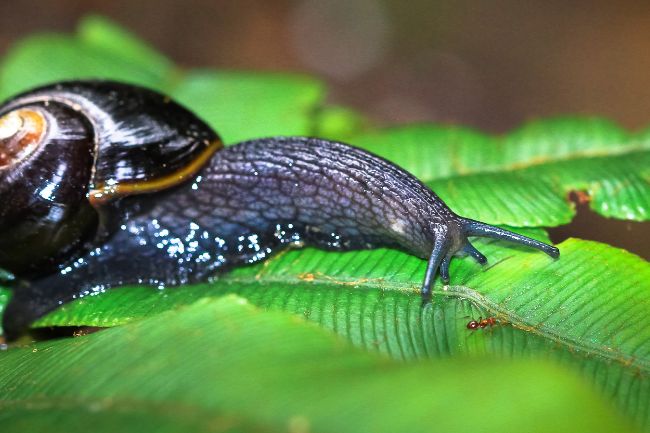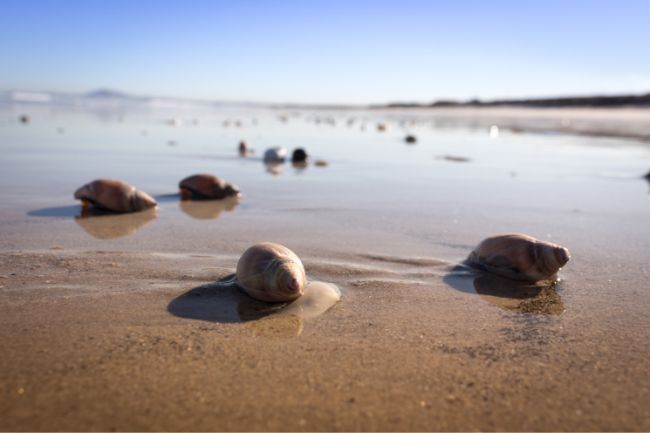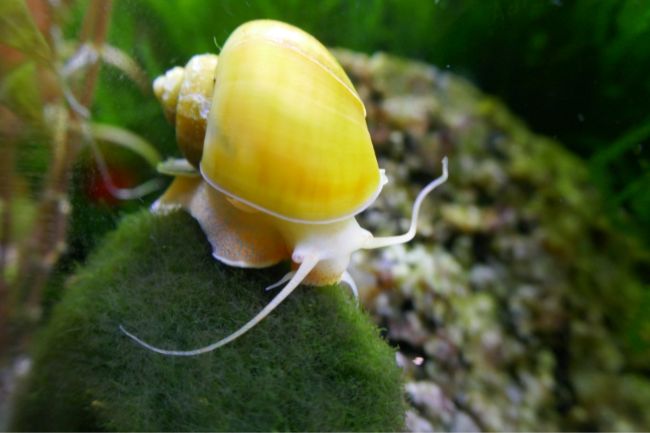Snails live in a wide variety of habitats, and therefore have to have different methods for breathing. Some use a primitive lung to pull in air, while others have gills. Some even absorb air directly through a part of their body called the mantle.
Contents
How do snails breath?

Snails, like most living creatures, require oxygen to survive. Oxygen is one of the building blocks of life, and most animals acquire it through the act of breathing. While lungs have always been popular with mammals, there are many other methods of breathing.
| Snail Species | Breathing Method | Additional Information/Explanation |
|---|---|---|
| Land Snails | Pulmonate Respiration (Air-breathing) | Land snails have a specialized respiratory structure called a “pallial lung” or “lung cavity” that allows them to extract oxygen from the air. They breathe using a combination of muscular contractions and passive diffusion. |
| Aquatic Snails | Gills or Skin Respiration | Aquatic snails have gills that extract oxygen from the water. Some species of aquatic snails can also respire through their skin, absorbing dissolved oxygen from the surrounding water. |
| Amphibious Snails | Both Gills and Pulmonate Respiration | Amphibious snails possess both gills and a lung cavity. They can respire through gills when in water and switch to pulmonate respiration when on land or in environments with low oxygen levels. |
Many insects allow air to seep into their bodies through holes in their exoskeletons. Fish run water over sets of gills to acquire oxygen. And worms simply allow the oxygen to be absorbed through their skin. So what about snails, where do they fit in?
Across the world, there are over 40,000 species of snails. Due to their long evolutionary history, different species have come to specialise in living in different habitats. Some snails live on land, while others spend their time in the water. Of the snails that live in water, some spend their time in and out of the water, while some stay there permanently.
| Snail Species | Adaptations for Breathing | Additional Information/Explanation |
|---|---|---|
| Land Snails | Pneumostome, Mucus Production | Land snails have a small opening called a “pneumostome” that allows air to enter the lung cavity. They also produce mucus that helps retain moisture and facilitates gas exchange across the lung surface. |
| Aquatic Snails | Gills, Vascularized Mantle | Aquatic snails have gills that are richly supplied with blood vessels, enabling efficient oxygen uptake from the water. They also have a vascularized mantle, which aids in respiration and gas exchange. |
| Amphibious Snails | Retractable Gills, Moisture Retention | Amphibious snails have retractable gills that can be extended in water and retracted on land. They also have adaptations to retain moisture, such as a thickened mucous layer and a sealable opening in the shell. |
All these different ways of living mean that snails have adapted their bodies so they can best access the oxygen around them. This fascinating array of breathing methods can even help us understand which snails have evolved to cope with different conditions. So what are the different ways in which snails breathe?
Also read: Is Snail Vertebrate or Invertebrate? (Let’s Find Out)
Land snails

Land snails probably have the most similar method of acquiring oxygen to us. Essentially, they have a type of lung, known as a pallial cavity. Like our lungs it is designed to pull in air from the outside, and allow oxygen to absorb into the snail’s body. It then expells the unwanted carbon dioxide, which is a waste product of the process.
In order to get air in and out of this lung, land snails have a hole on the side of their body, known as a pneumostome. It’s the presence of this method of breathing that makes these snails pulmonate snails.
In order to breathe, the snail can open and close the pneumostome. In fact, the snail chooses to close the pneumostome when not breathing, in order to avoid losing too much moisture.
While this may all sound very similar to our own method of breathing, there is one particularly strange difference. As well as using this hole to breathe, snails also use their pneumostome to expel poop!
Sea snails

Most of us will be aware that many aquatic animals use gills to breathe. Gills are generally feather-shaped appendages, which can absorb oxygen from the water.
In order to absorb oxygen, gills need to have water flowing almost continuously across their surface, as oxygen can only be taken from water in contact with the surface of the gills.
In aquatic snails, the gills are generally located under the mantle within the mantle cavity. The mantle is a muscular layer beneath the snail’s shell. In order to have water run across the gills, snails have an opening, which brings water in and then expels it further down.
This tunnel-like opening also helps to flush waste away from the snail’s anus, which is located further down from the gills.
Many modern marine snails only have one set of gills, however, some species have two. Historically many more used to have two sets of gills, however, they lost one set. This evolution helps prevent sediment getting trapped against the membrane supporting the gills, allowing the snail’s to live in a wider range of habitats.
Another evolution in some snails has been to develop a telescopic tube-like appendage, known as a siphon. This allows them to pull in water to run across their gills. It is also useful for burrowing species, as this tube can poke up above the sediment.
Not all marine snails spend all their time in the water however. Many live in intertidal zones and will emerge from the water as the tide retreats. For many of these species they will retain water in their pallial cavity, and use this to breathe. As the oxygen in this water is used up, more oxygen will infuse into the water from the air around.
Also read: “Do Snails Bite?”: Can They Bite Us?
Freshwater snails

Freshwater snails are often land snails that have re-evolved to live in water. This means their method of breathing can be the same as land snails, requiring air to breathe. If this is the case they will need to leave the water periodically to breathe. In some cases they can go to the surface of the water to gulp air without emerging.
Some freshwater snails, such as the pond snail, will store air within their pallial cavity, and use this to breathe underwater. This will also help the snails to float in the water.
Other freshwater snails have gills, as marine snails do, helping them to breathe underwater.
Also read: Snails When it Rains: Why Do They Come Out?
Best of both worlds
Some snails just couldn’t choose, and have opted to have lungs and gills. Mystery snails are an example of this, a freshwater snail found in South America.
Deep breathe
The way snails breathe is fascinating, largely because they have so many different methods, depending on where they spend their time.
However they do it, these molluscs need to breathe to survive, and do what they can to get a breathe of fresh air.

